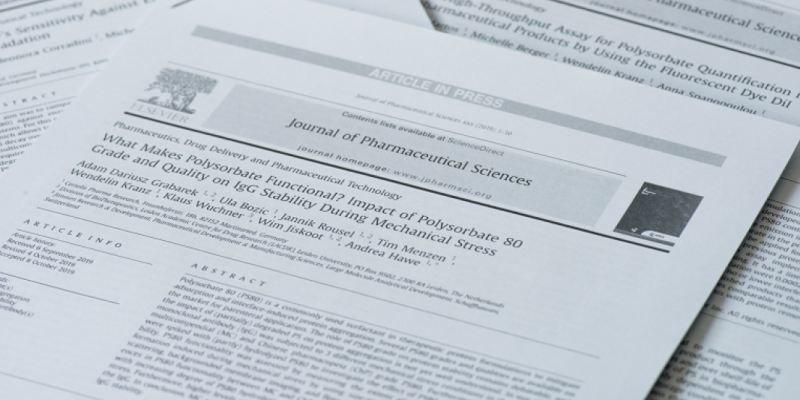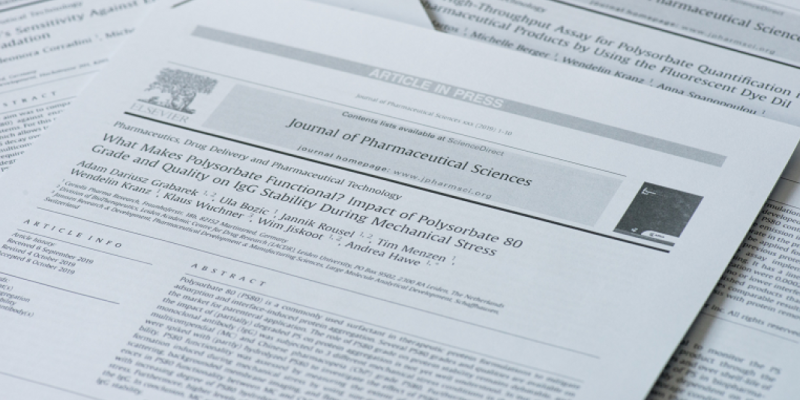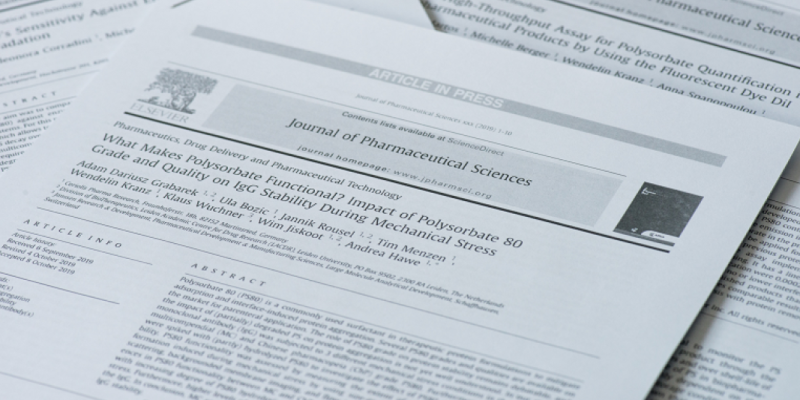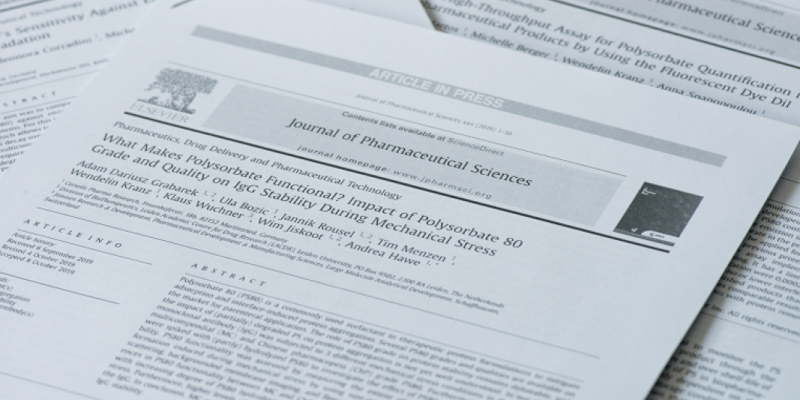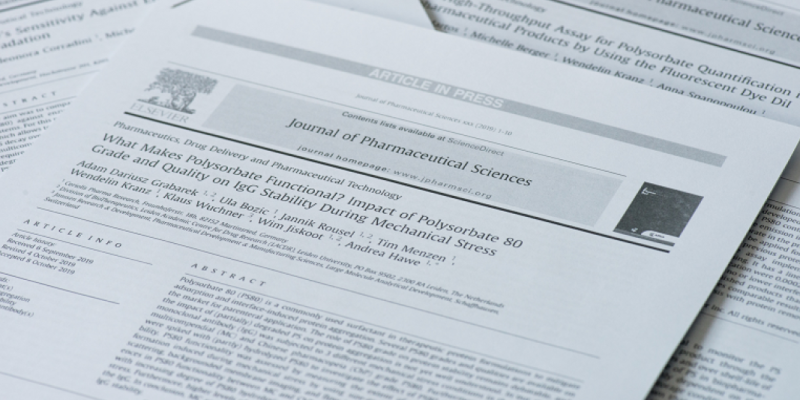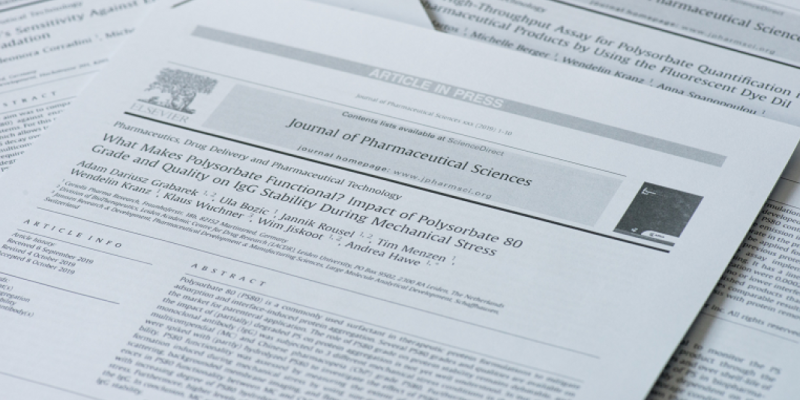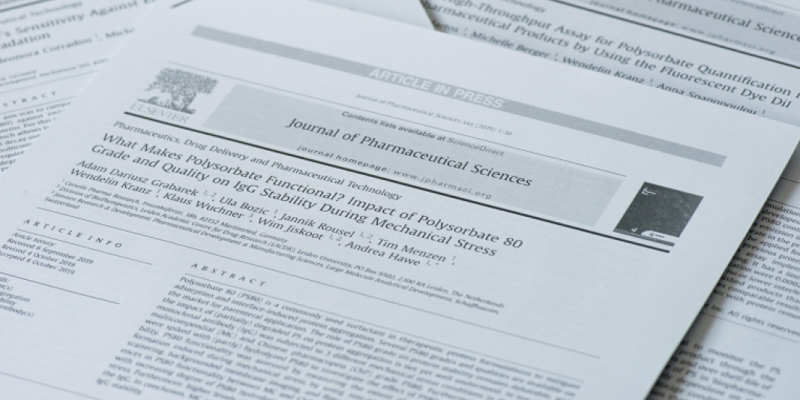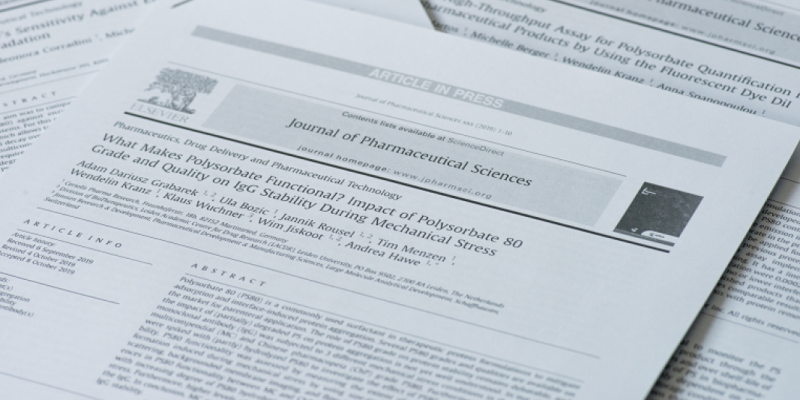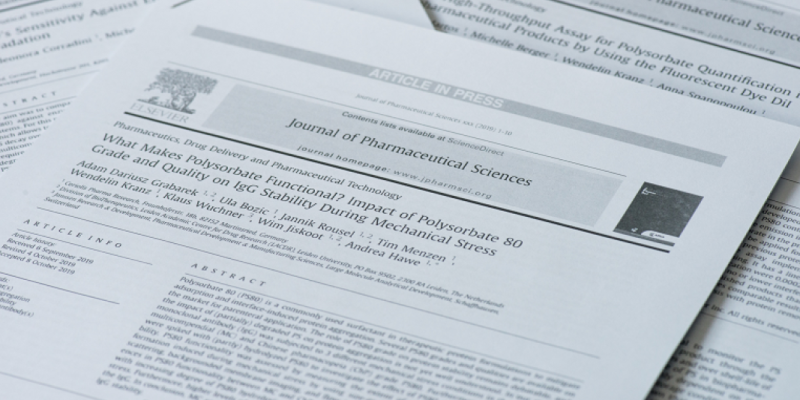The role of polysorbate 80 and HPβCD at the air-water interface of IgG solutions.
Pharm Res. 2013 JAN
PURPOSE: To test the hypothesis of surface displacement as the underlying mechanism for IgG stabilization by polysorbates and HPβCD against surface-induced aggregation.
METHODS: Adsorption/desorption-kinetics of IgG-polysorbate 80/-HPβCD were monitored. Maximum bubble pressure method was used for processes within seconds from surface formation. Profile analysis tensiometry was applied over long periods and to assess surface rheologic properties. Additionally, the kinetics of adsorption, desorption and surface displacement was followed by a double-capillary setup of the profile analysis tensiometer, allowing drop bulk exchange
RESULTS: Weak surface activity for HPβCD vs. much higher surface activity for polysorbate 80 was shown. Protein-displacement when exceeding a polysorbate 80 concentration close to the CMC and a lack of protein displacement for HPβCD was observed. The drop bulk exchange experiments show IgG displacement by polysorbate 80 independent of the adsorption order. In contrast, HPβCD coexists with IgG at the air-water interface when the surface layer is built from a mixed IgG-HPβCD-solution. Incorporation of HPβCD in a preformed IgG-surface-layer does not occur.
CONCLUSIONS: The results confirm surface displacement as the stabilization mechanism of polysorbate 80, but refute the frequently held opinion, that HPβCD stabilizes proteins against aggregation at the air-water interface in a manner comparable to non-ionic surfactants.
Pharm Res. 2013 JAN
https://link.springer.com/article/10.1007%2Fs11095-012-0854-x


